|
Here are chapters 5-7 of The Happiest Choice. These include information on a road map of coping with depression and anxiety, as well as activities, hobbies, foods, and nutrients. If you want to support this work - my book sales are going to take a major hit this year with Coronavirus and I'm still not sure how I'll make up that income. You can purchase a physical copy on Amazon or directly from me on my Etsy page www.etsy.com/shop/radcatpress You can also sign up for my Patreon at www.patreon.com/sageliskey for various perks including access to my complete collection of books and zines. Alternatively, give a donation via Paypal to [email protected] Thank you! Take care! If you missed the first 4 chapters, here's the link: http://www.sageliskey.com/home/the-happiest-choice-chapters-1-4 I'll post more in the coming days! 5. The Road Map of Coping
The goal with this road map is to create long-standing contentment and stability, rather than short-term happiness. Note that this will take time and a certain amount of trial and error. As personal discoveries are made you will have the choice of altering your lifestyle and ways of thinking. It might be frightening and difficult at times, but will pay off in the end by a renewed sense of peace and purpose. A depressive episode can completely change your personality and perception of the world, and so when depression does strike, it is important to be prepared with as many tools as possible for finding your way back to a state of contentment. The contents of this chapter will reveal the primary tools you can use to apply coping mechanisms to your life. There are other tools throughout this guide, but the tools in this chapter build a foundation to work from. 5.1 - Desiring Change and a More Content Life A basic starting point to coping with depression is acknowledging that you are experiencing depression and it is impacting your ability to enjoy life. Perhaps you already know this, but the connection is not always easy, especially with the myths and stigmas surrounding depression. It is also common to feel crummy but not acknowledge those feelings as signs of depression. In a lifetime, most everyone will experience depression. It is just a label that you can use to better understand yourself and how to reach a stronger sense of fulfillment. (click Read More to continue reading) Sometimes depression will go away on its own, but when wanting to shorten the length of time you are depressed, you need to desire that change to happen. This is not always easy as motivational energy is sapped away within a depressive episode. Developing a set of activities or a routine that convinces your mind into wanting change and breaks apathetic behaviors is useful. Here is a list of things that I have used to fight apathy:
When you desire change, insight to solutions may be found in many places, including those that were previously meaningless to you. Books, memories, and words from friends hold more meaning in a place of inner turmoil. Reforming habits is also easier. The desire for change within a depressive episode is not just a time we desperately want to learn and grow; it is an ideal time to find and apply creative solutions to our difficulties. 5.2 - Awareness of “Potentials” and “Triggers” To become aware of your “potentials” and “triggers,” review the list in Chapter 4. For “potentials,” explore what your childhood was like, difficult life experiences, and your nutrient intake. Depression caused by genetic abnormalities is difficult to uncover, but may be a likely culprit if other treatment methods do not respond well or depression runs in your family. If you have never experienced depression until your 30s, 40s, or 50s, or if your depressive episodes occur cyclically on a daily or monthly basis, you may have hormonal depression. For more help, read the sections cited in Chapter 4. As for “triggers,” ask yourself what event or events triggered the depressive episode? How did it make you feel? How did the episode end or what alleviated your emotions? Form the “triggers” into a simple and accessible list of direct consequences. For example, “If I don't _____, I will feel/think/behave _____.” Or, “If _____ happens, I will feel/think/behave _____.” See the end of this book for a helpful “My Mind” sheet to fill out. Reading this list will help you acknowledge that there is a reason for the way you feel and that it is not the norm. In this manner, you can focus on dealing with the cause rather than the negative thoughts and feelings created from being depressed. It will also give you a road map of what you need to do in the future in order to either avoid the causes of your depression or transform those causes into something non-triggering. As you discover the things that trigger depressed feelings and depression in your life, it is important to turn down or suggest alternatives to offers that involve these triggers. This may mean ending or not pursuing certain friendships. It may also mean having conversations about how you experience reality and have difficulty with certain movies, words, behaviors, actions, etc. You can say “I'd rather _____,” “not today,” “I want to leave,” or “I dislike this, can you/we _____?” Some triggers are deeply ingrained and may require reforming habits too. 5.3 - Forming and Deforming Habits With awareness of your “potentials” and “triggers” you can begin altering your lifestyle. This might include things like your environment, friends, and especially habits. Habits are both physical and mental. You can have a habit of brushing your teeth, or of panicking when you see someone. An extended period of depression may cause a mental habit of it and create anxiety or sadness more easily in the future. It is therefore important to deal with existing depressive triggers as soon as possible and prevent new triggers from forming. According to Charles Duhigg, a habit has three parts to it, the “habit cues,” the habit itself, and a reward for performing the habit (Gross. Habits). An example would be the smell of cookies (the habit cue) leading you to purchase and eat a cookie (the habit) which in turn satisfies your sweet tooth (the reward). Habit cues include anything from sights and sounds to smells and feelings. Once the habit has initiated, the brain actually automates the task and is free to think about other thoughts and actions. Everyone forms habits at a different rate, though three weeks has become a popularized number for people to strive for when attempting to embed a new habit (Layton). If you are performing a behavior regularly enough, it should stay permanently wired within your neural makeup after this amount of time (Delude). This is great for healthy habits, but also makes breaking an unhealthy habit exceptionally difficult. Even if you do break a habit, being around old “habit cues” can quickly make the habit reform (Gross. Habits). This is especially challenging as the rewards for an unhealthy behavior are often more immediate than the rewards for a healthy behavior. So how can you change your behaviors? Tips for Forming Habits
To learn more about habits, read The Power of Habit by Charles Duhigg, or B.F. Skinner's research work on “operant conditioning.” There are also smart phone and computer applications available for helping you form and deform habits. One free habit building application called Habit RPG <www.habitrpg.com> even incorporates addictive aspects of video games. You start by creating an avatar and then earn experience and gold for completing your set tasks. In turn you level up and can purchase personally set rewards for yourself and gear for your avatar. 5.4 - Action Plan An action plan lays out how to deal with your potentials and triggers. It covers things like habits, people, and environments that you could add or remove from your life to find a stronger sense of contentment and happiness. The plan might start with identifying the biggest thing you want to change, how you could live that new life with or without it, monetary needs, different class times for learning something, obstacles to overcome, and in general all the steps required to get from point A to point B. Schedule in the time you need to do these individual tasks, and get to it. The following bubble diagram is one method of creating an action plan. 5.5 - Time for Self-Care and Scheduling Even if you always seem busy, you can still find the time to take care of yourself. If you can't read a book, listen to an audiobook. If you can't go to the gym, exercise while sitting down, or stretch while brushing your teeth. If you can't join a meditation group, meditate while eating food, or before going to sleep. In other words, combine self-care with the things you already do on a daily basis. You might also remove certain things or at least decrease the use of them in your life, such as using the internet and watching television. It all comes down to reforming how you think things should be done. Creating a schedule will also help you find that precious time. A schedule acts as a reminder for what you need to and want to do, and helps you find more time to enjoy life and practice self-care. With depression the desire to do anything often plummets. Plans get canceled and work productivity slows. Not only that, but daily routines may become unenjoyable. A schedule is a very effective navigation tool for not losing your course, and can take many forms. It can be a single piece of paper, a day-to-day planner book, a calendar, a phone application with automated reminders, or all four. I prefer a weekly planner, but you do have to remember to check it every day. Make sure to cover activities for your personal health first, and then include time for other things like volunteering, media entertainment, and hosting events. Scheduling too much time for others, or too much in general, might create stress and hardship and make you forget to do things like exercise, sleep, and eat healthfully. Once you’ve completed a task, it’s especially nice to cross it off as an accomplishment. Depending on how you personally experience depression, you may want to schedule your entire day out, including waking up, eating, and so on. Another scheduling technique is creating a list of activities to do if you feel a certain way or something triggering happens. The Icarus Project (see Section 14.2) calls this a “mad map.” To create a mad map, write your “escalators,” or negative emotions, and next to that your “de-escalators,” or actions that make you feel better when sad, anxious, and so on. Below that, list people to call at any time to talk with. This should be put somewhere easily accessible so that you will read it when needed. You could also include a list of specific things that cause you stress and how you coped effectively with them in the past. See the end of this guide for a slightly modified example called “My Mind.” Knowledge of your potentials and triggers and how to form and deform habits, as well as creating an action plan and schedule are the basic tools for applying self-care to your life. The remainder of this guide documents various triggers as well as things that can help lower one's potential for experiencing depression and anxiety. Note that not all these techniques will work for everyone. Sometimes there is culture in the way, sometimes there is money in the way, sometimes there are personal interests in the way, and that's okay–there are many options to choose from. What makes one person happy and content might do nothing for another, or even trigger depression or depressed feelings in them, so it is your job to experiment. What activities, foods, medicines, environments, thoughts, and nutrients make you feel better? Which don't? Apply this knowledge to discovering the life you want to live. 6. Activities and Hobbies Not only do things like running, art, writing, traveling, music, collecting, potlucks, and puzzles bring fulfillment and potentially connect you with new friends, activities and hobbies like these also help keep the brain from obsessing over negative thoughts. This is especially true when experiencing something wholly new or getting your adrenaline pumping. Try out activities from the newspaper, classes, or online from websites like <www.craigslist.com> or <meetup.com>. Activities that help others are especially fulfilling by occupying your time with making a difference and boosting self-esteem and self-worth. Find what nourishes your well-being. Schedule all activities into a planner or to-do list, or set up dates with friends so you feel more inclined to do the task. The following section documents some of the best activities and hobbies for coping with depression. 6.1 - Deep Breathing, Meditation, Mindfulness, Prayer, and Rituals Deep Breathing Slow and deep breathing (breathing into the abdomen or diaphragm) can provide a quick reduction in blood pressure and anxiety (Cuda). According to physician Esther Sternberg, this intentional action prevents the production of stress hormones and in turn allows the body to calm itself. Reforming shallow breathing into a habit of deep breathing could even provide a long-term method of stress reduction. If you are unfamiliar with deep breathing, slowly take a deep breath in through your nose. Your belly should expand before you exhale through either your nose or mouth. Meditation Regular meditation improves mood and prevents depression (Paula). There are many forms of meditation including mindfulness (Vipassana), zazen, transcendental, kundalini, qi gong, guided visualization, trance-based, and heart rhythm meditation (Bair). The primary goal of most of these practices is to gain better control over the mind and body, but different styles accomplish different things in different ways. Mindfulness One of the most popular forms of meditation is mindfulness meditation. Why can words, sounds, gestures, images, and other stimuli cause sadness, anger, and anxiety? It is because the mind fuels them with thoughts and judgments and in turn obsesses over the stimuli in a negative way. With mindfulness you learn that there is an option to think or not to think, and that it is okay and often healthy not to. This is because the more you focus on something the more intense it becomes. Obsessing over negative or positive things (such as a person you really like) can cause suffering, so when one trained in mindfulness becomes aware of those thought streams, they move their focus to the sensations of the present moment (Grohol). Researchers have found that the act of regularly focusing on the present moment gradually “[increases] activity on the left side of the prefrontal cortex, which is associated with joyful and serene emotions” (Meditation). The practice has been shown to decrease anxiety, increase brain gray matterA, and prevent age related memory loss (Lazar). Another benefit of practicing mindfulness is that it enhances our sensations. By removing judgments, getting out of our thoughts, and focusing wholly on what is, sights become more beautiful, smells are more aromatic, feelings are more sensual, food is more tasteful, and music sounds more pleasant. It is a sort of joyful perspective that, with practice, can be maintained indefinitely and transforms the whole world into a new oasis to experience. Mindfulness is not an act of avoidance, but rather an awareness of what is healthy and what causes suffering while fully experiencing life. Some practice “living in the present moment” as ignoring the future and not making plans, but this is unhealthy and often harmful to others. A healthy practice of “living in the present moment” is being aware of your actions and where your thoughts are, whether in the past, present, or future, and how those thoughts and actions impact yourself and the world around you. Mindfulness can be used all the time, or simply when you notice a need to step back from your thoughts for a while. It might be likened to your focus on a really good movie, or a rush of adrenaline from playing sports or competing in a game. It is total focus and immersion into what is happening right now. Mindfulness is a skill that takes time to develop, but there are many ways of practicing it anywhere and anytime. These include things like maintaining awareness of the sensations of your body, of an action you are performing, of a conversation, or of thoughts that arise, but the most common way of practicing mindfulness is following your breath. Your breath is always with you, and so it is a reliable focal point. The more you practice being aware of your breath, the easier being aware of other sensations and aspects of your life will be. Closing your eyes will help prevent distractions, but you can certainly do this practice with your eyes open. Follow the air moving under your nostrils and down into your belly, and then follow it back out. Keeping count of your breaths or saying “in” with each inward breath and “out” with each outward breath may help maintain your focus. Try doing this breathing awareness exercise for five to ten minutes daily as you first begin, and challenge yourself to increase it to 20 or 30 minutes a day as you get better. Thoughts and judgments of the past, present, and future may arise, but let them flow past and return your focus to the sensations of the present moment found in your breathing. Sometimes I note the emotions attached to a thought before returning to my breath by saying something like “I'm really excited about that,” or “I have some anger built up around this person,” just to acknowledge it and not ignore what I'm feeling in that present moment. While focusing wholly on your breathing or other sensations, you cannot be distracted by sadness or anxiety. At a basic level mindfulness provides us with a calming period where we can step back from extreme emotions prior to dealing with a situation in constructive rationality. You might use mindfulness when, for example, your boss critiques your work because it does not meet their standards. Instead of making yourself feel bad by obsessing over the critique with thoughts of worry and anxiety, focus on your breathing, a vase, the sunlight, a conversation, or any emotionally neutral stimuli. Do not follow negative thoughts into the past or the future. Take up the space used for making yourself feel bad with the small details of your surroundings and your body's sensations. While I believe not labeling anything helps you focus on sensations better, it may be useful to silently state different details of an environment when first learning visual mindfulness such as “I am sitting in a wooden chair,” “there is a white glass lamp on the table,” and “I am turning a brass door handle.” This task is even easier to do in movement. While walking, stay present by focusing on an object until you pass it, and then change your focus to a new object. Look deeply into the details, noting small textures and colors. Another option is to sit with an emotion and focus on it, fully experiencing the sensations it creates. Doing so will make the emotion go away much quicker because your thoughts are not fueling it with constant reminders. Once you have calmed down, use other techniques, such as writing, to process and deal with the situation. One more idea is to train yourself to hear natural mindfulness bells. These stimuli remind you to focus on your breath and can include things like cars honking, a cell phone buzzing, or an angry person talking. Natural mindfulness bells are great because they rewrite how your brain processes an event by creating a new and positive habit for habit cues you normally find stressful or triggering (Layton). With enough practice it is possible to find calmness where once there was turmoil, just by breathing. Resources to learn mindfulness can be found at <http://www.mindful.org/mindfulness-practice>, in the writings of Thich Nhat Hanh, and the book How To Train A Wild Elephant & Other Adventures in Mindfulness. More helpful, however, is joining a meditation group or taking a class. Yoga and tai-chi are options that integrate stretching, movement, and meditation together. Another option is joining a sangha, or community, that practices under the non-dogmatic teachings of Thich Nhat Hanh and offers mindfulness meditation for free or by donation. They practice a mixture of walking, sitting, guided, listening, speaking, and eating meditation. For help finding a sangha near you, or starting a sangha, go to <www.thichnhathanhfoundation.org>. There is also Wake Up <wkup.org> for young-adult and youth-based sanghas. Yet another option is Vippasana Meditation. Vippasana is a mindfulness meditation where beginners are generally required to complete a free 10 day silent retreat before moving on in the discipline <www.dhamma.org>. Whichever course you take, attending a retreat is very beneficial for creating a space where you fully focus on forming a habit of meditation. There are also online podcasts, smart phone applications, and communities of people encouraging each other to find mindful awareness. Prayer To stay in the present, it is also useful to make peace with the past. Prayer, especially "prayers releasing hurts” and “prayers of blessings” on persons who have offended you can help improve mood (Boelens). This means taking time to forgive yourself for things you might blame or judge yourself for, and wishing well on and forgiving people who have hurt you in the past. While often associated with a religious or spiritual lifestyle, prayer can also be practiced by a person with a secular worldview. This 'prayer' might even take the form of a mantra meditation, where a positive or insightful phrase is said with each inward and outward breath. Take some time right now to focus on moving onward and transforming negative memories into memories of growth and healing. Rituals The act of holding a ritual creates a space to deepen your emotions, commitments, or your desire to change. The components of the ritual are generally symbolic, but necessary to strengthen your feelings surrounding your goal. You have to believe in that goal to actualize it. In this space that you hold for yourself or with others, you might remind yourself what is important to you, move on from hurtful memories, end emotional ties to a friendship or relationship, or accept your transition into a new life. Some common rituals include church, new and full moon ceremonies, and holidays. A ritual of letting go of the old might involve writing out all the frustrations you have on paper, and then with a strong desire to let go of what is written, burn the grievances. Another idea is to collect relics of a difficult time and bury them underground; soil organisms can take care of the memories from there. You could also answer questions about what motivates you or what keeps you happy. To prevent dependency it is suggested not basing this on any one person or thing, but rather on what keeps you happy on your own. Some examples are waking up to watch the sunset each morning or lighting a candle for someone you respect before going to bed. 6.2 - Gratitude and Volunteering Expressing gratitude toward others alleviates depression and improves happiness (Seligman). Gratitude for others can be expressed through acts such as gifts, letters, donations, or even just a few kind words of appreciation for someone's existence. Gratitude is especially powerful when done at random without reasons such as a birthday or anniversary. You can also show gratitude by volunteering with different groups. Partaking in volunteer opportunities builds job skills, introduces you to new people, and provides a sense of fulfillment. Search online or look at your local newspaper and see what's available in your area. If you do volunteer though, watch out for negativity and groups that try to destroy rather than create something. Read more in Advocacy, Volunteering, and Activism (Chapter 12). 6.3 - Gardening, Farming, and Soil Bacteria By gardening, you not only feel fulfilled through meeting the essential human need for food and nurturing other lifeforms, you also get sunlight (vitamin D), exercise, fresh air, and exposure to a bacteria called Mycobacterium vaccae. Research conducted by Dr. Christopher Lowry indicates that Mycobacterium vaccae is an antidepressant and prevents inflammatory disorders like asthma (Marano 57). Much more research is being done into M. Vaccae that suggests it has other health benefits as well. Accordingly, Dr. Lowry has proposed the “hygiene hypothesis,” which states that many people today are sick because they are too clean and not getting outside enough. This makes sense, because our bodies rely on a symbiotic relationship with bacteria to function. In fact, for every human cell in our body, there are 10 microbial cells (Gross. Bacterial). If we lack bacteria that our bodies have traditionally used to work, then the natural consequence is that our bodies cannot function to their full capacity. Some of my friends even stopped needing to take their pharmaceutical anti-depressants when they began working on an organic farm. This could have been caused by a number of factors, but it was still intriguing to hear. Farming has the added benefit of usually being removed from city stresses such as pollutants, cars, loud sounds, overwhelming stimuli, and, depending on where you live, ugly city aesthetics. 6.4 - Writing Writing has been an effective tool for me when coping with depression. Putting words on paper or a computer helps me process thoughts and stressful situations as well as record my life. It is nice to be able to look back and know my mental and physical accomplishments, or pick up on unhealthy situations and habits. Writing a thought or feeling also makes it stable and concrete, so that it does not have to be continuously repeated as it would be in my head. In this way a thought can be developed rather than dwelled upon. Part of fighting depression is in recognizing that you are depressed and how that influences your thoughts and feelings. The world experienced from a depressed state appears starkly different. In this altered state, you may lash out at yourself or others, and often in ways that hurt the “un-depressed you.” By processing your thoughts and feelings, you will better understand their basis in reality and how to deal with them accordingly. Realize that your friends have no reason to dislike you, or that strangers are not judging you poorly. Also consider:
6.5 - Reading Reading materials provide a lot of insight about your life and the interactions with the people around you. Reading news, magazines, online articles, horoscopes, scriptures, and fiction and non-fiction books also provide talking points when socializing. Chapter 14 includes a list of resources with books and websites that have provided life-changing information to me. Studying psychology can also help illuminate why your brain works the way it does. 6.6 - Make and Experience Arts and Crafts Art is a means of expressing what cannot be said with plain words. Over human existence it has been a useful tool for personal discovery and relating stories to the masses. Making art, or participating in art therapy sessions can actually reduce depression, anxiety, and hopelessness (Judith; Hughs). With art you actively use your mind and body to stay present and also are able to self-analyze in a sort of meditative way. You might also feel a self-esteem boost from having a physical relic of something you have accomplished, or by receiving positive feedback for your completed artwork (if you are willing to share it). You don’t just have to make stereotypical pieces of art like paintings either. Why not play music, make informational booklets from your old essays, publish a community map of your favorite stores, crochet a rug, create a website, reupholster your couch, or build a strange table out of recycled objects? The sky's the limit, unless you build a space shuttle! When you make something yourself, even painting the trim on your house, you create a deeper connection and understanding with it in a way that is enlivening to see. Experiencing art may have a similar effect. While listening to a concert, walking through an art museum, or just browsing internet websites such as <www.deviantart.com> there is a chance that you run into something so beautiful and real that it wakes you from a sort of slumber. Art deepens our understanding of the world we live in by highlighting various aspects of it in an entertaining way. Artwork also connects us with others who have had similar experiences to our own, shattering the concept that we are alone in our struggles. The experience of artwork is generally heightened by seeing it in person. Unlike on a computer, the art's original may be massive, full of texture, contain distinctive sounds, or be part of an interactive exhibit. Just watch out for consuming too much art and disconnecting from reality. For more information see Media Addiction and Staying in Tune with “Reality” (Section 9.6). 6.7 - Listen to Music and Background Noise So long as you enjoy it, any type of music can improve mood (Kemper). Contrary to what some think, music stereotypically viewed as angry, such as death metal, is likely listened to as a symptom of depression rather than being the cause of a person’s negative feelings (Scheel). That said, I have experienced intensified anger, sadness, and depression brought on by listening to sad or angry music. In fact, many studies have shown that using aggressive outlets to release angry feelings actually increases the incidence of future aggressive acts (Russell). It might be better to react to difficult situations by playing a calming or thought-provoking playlist instead. Be mindful of how music impacts you, and make sure it does not become a means of completely avoiding emotions or processing thoughts. For more information see Media Addiction and Staying in Tune with “Reality” (Section 9.6) Another option for your ears is natural sound. If you want to create a calming environment, or if noises from things like doors, voices, and trains stress you out or keep you awake, listen to soothing recorded background sounds like rain, wind, and ocean waves. Download any number of nature's noises online and put them on loop to play indefinitely, or just turn on a fan. There are also smart phone applications available with large sets of calming sounds to choose from. 6.8 - Go on Adventures Take a break from your day to day life and go on an adventure. This might be a celebration, an educational retreat, camping, hiking, or visiting another country. Doing so lets you clear your head, meet new people, collect stories to tell, and discover new insights. The adrenaline rush that new experiences create also gives the body and mind a nice feeling. It is especially fun to connect with others who share your niche interests such as at car shows or comic book fests. For me, adventures are more meaningful if they take some effort to organize. A spontaneous adventure can still be fun and life-changing, but the anticipation leading up to a planned event is really great. To connect with hobbyist groups look online and in the newspaper for conventions and meetings in your area. For more information see Maintain A Positive Environment (Section 9.2). 6.9 - Smile and Laugh Our bodies associate smiling with expressing positive feelings and happiness (Lienhard). Even if you aren’t feeling happy, try giving a genuine smile and you might at least have a small break from negative emotions. Also try putting yourself in a social situation where other people are around because smiling is actually a social cue (Ruiz-Belda). My experience is that I express positive emotions more strongly when others are expressing them with me, so movies, memes, music, etc. are often better in groups. When life is especially stressful, it’s also nice to laugh. Although sometimes difficult, a stand-up comedy, funny book, quirky movie, or giggly friend can provide a certain entertainment that connects you to the idea that life has a happy side. Happiness is a skill, and just like any skill, takes practice if you are not naturally talented at it. 6.10 - Massage Therapy Massage therapy has a number of therapeutic benefits including “reducing pain, increasing alertness, diminishing depression, and enhancing immune function” (Field, Tiffany M). However, the massage must be given with at least moderate pressure for these benefits to take place (Field T). Light pressure will not work, so specify this to your massage therapist or buddy and get relaxed. 6.11 - Acupuncture Acupuncture may be effective at temporarily relieving symptoms of depression and anxiety, but research results vary with general acupuncture techniques (Zhang-Jin; Smith, Caroline). Those studies aside, it has induced a calming state when I've used it, and acupuncture studies using the NADA (National Acupuncture Detoxification Association) protocol seem more promising. The NADA protocol uses points in the ear to help relieve a whole host of symptoms, including depression and anxiety, drug addiction, and PTSD (Kenneth). Acupuncture can be expensive, but to reduce costs search for community acupuncture clinics that offer sliding scale fees and treat multiple people in the same room. 6.12 - Light Therapy Light therapy uses high intensity lights to simulate sunlight and can prevent seasonal affective disorder (SAD). SAD is a type of depression generally experienced in places with limited sunlight during the wintertime. Some evidence indicates that light therapy can also help prevent non-seasonal depression, especially with persons who are indoors most of the day (Young, “Bright”). Treatment times vary, but generally for the full effects to take place a session in front of a 10,000 lux light will last 30 minutes, and a session in front of a 2500 lux light will last 2 hours (Columbia). These lights can be purchased online. 6.13 - Calming Scents of Aromatherapy Certain smells are very calming for the mind, so see what you like and keep a bit of it with you whenever you need a peaceful break. These might take the form of herbs, essential oils, incense sticks, or flowers. Some smells that my friends and I enjoy include lavender, basil, sage, sandalwood, palo santo, roses, bergamot, mint, ylang ylang, cinnamon, cloves, and soil. 6.14 - Friendships, Relationships, and Community Friendship While depression and social withdrawal often go hand-in-hand, try to challenge yourself to spend time with others. My experience is that even if I don’t want to socialize, I feel better if I do. This may not be the case for everyone all the time, but humans are social creatures who thrive off of one another. Friends provide support for when you’re feeling down, share happy moments, and motivate you to do activities. Making friends is an art that anyone can become good at, but it takes practice and time. Learn what works and what doesn’t when communicating with a new person. Be sure you are consistent with social gatherings, or keep a ritual of contacting at least one person a day to make plans with or write a letter to. Have activities to do rather than just lounging around, or ask an acquaintance to teach you something they are passionate about. Also spend as much time socializing with people face-to-face as you can. While blogs, forums, games, chat rooms, etc. can lead to friendships, Facebook usage has been shown to increase depressed feelings after use (Kross). It is healthier to only use social media such as Facebook for organizing and learning about events in real life rather than trying to maintain friendships on it. Face-to-face encounters also provide certainty for what people are saying. Using interactions through electronic devices as a reason to believe someone doesn't like you might not be the best idea, because so much has to be assumed by the various forms of communication which are lost (tone, non-verbal hand and facial gestures, etc.). For more information read Communication (Chapter 10). If making friends is difficult, you might want to consider how you are expressing yourself or how you are relating to others. Try your best to assert needs for maintaining your mental health though, even if that sometimes means ending a friendship. This process is an opportunity for personal growth. Know that friendship is two-sided, and both sides must provide something that the other needs such as social contact, shared interests, food, and so forth. Both sides must also have the time to take on a new friend; though people can stay acquaintances for years and then develop a close friendship. No matter what your problems are or what interests you have, someone will likely share them. It’s just a matter of figuring out who! This begins with putting yourself out into the social world and being willing to make mistakes. Embracing labels, such as poet, artist, gardener, entrepreneur, etc. can be useful for connecting with groups too. See Section 10.2 for a description of introverts and extroverts that may also be helpful for your social life. While friends may be great at cheering you up while you are down, remember that suffering tends to create more suffering. Repetitively complaining or venting about the same thing is draining to others, and as mentioned in the chapter Thoughts for Change, is generally not a constructive outlet for getting better. If you have a lot of thoughts to process, seeking the aid of a therapist may be better than expending the energies of a friend. Unless your complaints are being used to work toward a healthy solution, consider transforming your social time used for venting into healthy outlets like exercising or cooking a nice meal. This is not to say that you should keep silent about your troubles, just be conscious that too much sharing of sadness, frustration, or anger, especially over the same thing, may be difficult for others. Also, just because you want to say something does not mean that it has to be said. Walk in another person's shoes and give yourself time to calm emotions and process thoughts rationally; doing so will make your friends love you all the more. Pets such as cats and dogs also help with one's social life because they make fairly forgiving friends and are easy to get along with. That is, so long as you take care of them properly. They can also help one learn about compassionate behavior, an essential skill with human friends. Friendship is essential, but be wary of basing all your happiness on one person or a group of people. Doing so will eventually lead to a lot of pain because you will not have anyone if those social ties end. Beyond maintaining a diverse network of friends, be your own best friend, take care of yourself and do things for you that make you happy. There is also the option of having an imaginary friend or two with non-living creatures such as a stuffed animal or piece of artwork. Having backups when friends bail or go sour is important to recouping faster, and to not being upset about the chaos and spontaneous decisions made by others. Do you feel safe and comfortable around your friends? Can you be yourself? If a friendship is not working out or consuming your time from making more meaningful friendships, it is okay to step back or end that friendship. This might involve a formal conversation, seeking out new friends, removing or unfollowing that person on social media websites, or holding a ritual (Section 6.1) to help let go and move forward. Relationships Friendship can also develop romantically into a relationship. Relationships should ideally not be sought out as a coping mechanism for depression, but only as a point of mutual love. This is because codependent and abusive relationships are more likely and harder to remove yourself from when you are in a depressed state of mind. A healthy relationship involves communication, consent, and, maintaining other friendships. Through this you are given purpose and a person to feel safe around, but the emotions often come in extremes too. You will almost definitely experience extreme happiness and extreme sorrow at some point. Even with those extremes in mind, sharing love is worth a lot in life. Of course, you don't need to engage in a relationship to express or feel love; that can be done through friendships. Be wary of spending all your time with a partner. Doing so will make the end of a relationship much harder. Continue to seek out new friends and spend time with old ones, even if a lover is also your "best" or "only true friend." If a partner is physically or verbally abusive, manipulative, does not respect boundaries, does not communicate well, or needs more than you can give, it may not be the right relationship for you. Even if breakups are hard, there are many other people to fall in love with, and being your own stable person is most important. One useful technique for maintaining stability is to get into a relationship with yourself. Love yourself. Go out with yourself. Do things that make you feel fulfilled and good. Acknowledge when you aren't spending enough time with you, and make it known! Community If your current living situation is isolating, consider joining a community. Community living and renting a house with others is great in that it takes a lot of pressure off of meeting people, makes finding social events easier, lowers individual expenses, and gives a lot of meaning to one's life. Check out the National Association of Student Cooperatives <nasco.coop> and the International Communities Directory <http://directory.ic.org> for community resources and information. 6.15 - Sex, Masturbation, and Pornography SexA and masturbation both have similar effects on the body by releasing the happy chemicals serotonin and dopamine (Sperm). On the one hand, sex has the perks of creating great happiness, validating your physical qualities, and potentially bonds you more strongly to a person you love. On the other, sex comes with risks such as pregnancy, sexually transmitted diseases, and other emotionally difficult things like jealousy. Because it can deeply hurt you and the person involved, sex is not an ideal coping mechanism. It can, however, be nice as part of a relationship or connecting with someone. Masturbation is a safer avenue to orgasmic pleasure than sex because it is disease and pregnancy free. The main concern is the use of pornography as a masturbatory tool. Pornography can be part of a healthy masturbatory experience if consumed with full consciousness of what you are seeing, though that can be difficult. Mainstream porn has the tendency to promote unrealistic gender, relationship, and sexual roles and rarely represents how real sexual encounters occur. Dependency is also frequently a problem for depressed folks, and many people find themselves not just using porn, but needing to. Dependency on porn interferes with daily tasks, creates social anxiety, and can induce unhealthy thinking about yourself or others. If you think your porn use meets these criteria it might be a good idea to put the porn away and work on exploring your body without masturbation aids (or with different ones). Seek therapy if this is a struggle, or download porn blocking software and set a random password you won't remember. There are also alternatives to mainstream porn, such as “feminist porn,” which promote healthier views on sex and the people involved. 6.16 - Celebrate Changes Suffering sometimes stems from disliking changes in life, for instance the change of seasons, growing older, the loss of a loved one, moving, or a medical operation. Rather than having these changes suddenly consume your life, meet them halfway and celebrate. Throw a party, go on a hike, hold a ritual, meditate, have a bonfire, shout and scream at the top of a mountain, or anything that provides a release for you. This can be done alone but is especially nice with a group of people who benefit from the celebration of change too. For more information see Rituals (Section 6.1). 7. Taking Care of Your Mind and Body By taking care of your mind and body, you will be healthier now and happier with your health later. Your mind and body are one. Chemicals from the brain direct the body, and what you do to and put into your body alters the chemical composition of the brain. Chemicals such as serotonin, dopamine, and norepinephrine have a huge impact on mood. It must be noted that there are people born with chemical and genetic abnormalities that prevent these and other chemical processes from happening naturally. People may also develop abnormalities during their lifetime, but normally you can influence these mood-altering chemicals with how you treat yourself through eating, exercising, sleeping, and taking supplements and medicines (Chapter 8). 7.1 - Food Poor diet has been linked to depression and anxiety (Poor). For me, eating a certain way affects my mood within a short period of time. If I eat a lot of something like bread or sugar, I will have no desire to be around people because I feel agitated and anxious. Poor diet is the result of both not consuming the right foods and consuming the wrong foods. Depending on your body type, age, and ethnicity, you may need a slightly different diet than others, but there are general guidelines to healthy eating:
Along with eating nutritious foods, you might also consult a nutritionist about going on an exclusion diet to see how different foods allergically affect you. Many physical and mental conditions may be caused by reactions to certain foods, even if you have eaten those foods for your whole life. My friends and I have seen altering the way we eat affect our skin conditions, anxiety, and energy levels. Going on an exclusion diet means removing a common allergen such as wheat, dairy, corn, and soy from your diet and replacing it with a typically less allergenic substitute such as quinoa, rice, or almond milk. Avoid consuming processed foods during this time because many are packaged in the same facility as or contain derivatives of a food you are avoiding. After several weeks without the commonly allergenic food, note any changes you experienced and see how you react to eating the food again; if your symptoms are the same your nutritionist may recommend repeating this process with another allergen. The results can be very surprising! See the “Allergy Exclusion Diet” page on <WHFoods.org> for more information. Eating Intentionally Some people experience depressed feelings surrounding unintentional eating, such as overeating or snacking due to constant food cravings. Here are some ideas for bringing more intention to eating and changing habits surrounding food consumption:
7.2 - Nutrients, Malabsorption, and Genetics Depression is a common symptom of nutrient deficiency (Davison K Michelle). In one study, most subjects diagnosed with bipolar or severe depression were found to lack one or more of the following: fiber, α-linolenic (omega-3 fatty acid) and linoleic acid (omega-6 fatty acid), the B vitamins including thiamin (vitamin B1), riboflavin (vitamin B2), niacin (vitamin B3), pantothenic acid (vitamin B5), vitamin B6 (pyridoxine), folate (vitamin B9), and vitamin B12, vitamin C, calcium, magnesium, potassium, iron, phosphorus, and zinc. Nearly all of these vitamins and minerals are well established in maintaining healthy brain function. Other nutrients that play a role in mood and depression include vitamin D and selenium (see the nutrient table at the end of this section). In the United States most people base their nutrient intake on recommended daily allowances (RDAs). The RDAs seen on food packaging are the recommended minimum nutrient intake of vitamins and minerals to be healthy, which means you can take more of most nutrients without negative side effects. It is rare to get too much of a nutrient by eating whole foods, but if you begin taking supplements, follow the serving sizes and directions to prevent overdosing. A wholesome diet with lots of variety will get you most of the nutrients you need to be healthy, but food and how each individual’s body processes it is complex, so deficiencies may still arise. Furthermore, nutrients from fruit and vegetables are dependent upon the soil they are grown in. A deficiency in the soil means a deficiency in the food grown. If possible, get to know your local farmer and ask them how they grow your food. It’s for your health! Any nutrient deficiency can cause problems, so consider having a medical professional test your nutrient levels. Unfortunately these tests are rarely covered by health insurance, but if you can afford $100 to $300, ask your doctor where you can take one. The nutritionist may instruct you to supplement with a multivitamin or eat more of certain foods. Note that fortifying nutrients you are deficient in after a nutrient test may not be enough. Several genetic conditions and diseases cause malabsorption and prevent your body from optimal mental and physical health. Therefore a second nutrient test or genetic testing is necessary to know if these nutrients are being absorbed properly. Genetic testing is sometimes necessary because a nutrient test will show the body having plenty of a nutrient, but it won't be using the nutrient at all. For instance, folate, or vitamin B9, may not be processed into its usable form, L-methylfolate, due to a genetic abnormality, and in turn heightens the potential for experiencing depression (Nelson). With this condition a person may be consuming adequate levels of vitamin B9 but their body cannot use it. Once diagnosed by a medical professional, individuals may be given an L-methylfolate supplement. Seasonal Affective Disorder: Vitamin D, Sunlight, and the Outdoors A low level of vitamin D is often associated with seasonal affective disorder (SAD). SAD is a form of depression caused when a person does not get enough vitamin D, often during the winter months. A person can become vitamin D deficient any time of the year by not getting outside enough, or by wearing too much sunscreen or clothing. Skin color also affects the body’s uptake of vitamin D with lighter skinned people absorbing more. The Office of Dietary Supplements recommends exposure to the outside for 5-30 minutes at least twice per week to absorb enough of the nutrient when sunlight is available, and for people with darker skin to supplement when there is little sunlight (Dietary). Vitamin D does store up in the body, so it is possible with enough fall, spring, and summer sun exposure to last through a cloudy or shut-in winter, but more than likely you will have to supplement or consume vitamin D rich foods. Vitamin D is actually a hormone that exists in two forms, D2 and D3 (Crowther). In food D2 comes from plants like sunflower seeds, leafy greens, avocados, and carrots, and D3 comes from animal sources like mackerel, herring, salmon, liver, and lanolin (sheep’s wool oil is often used as a D3 supplement). D3 is the same molecule synthesized when skin is exposed to sunlight. Because D2 must become D3 in the body, D2 is only utilized one-third as well as D3 (Laura). To supplement, you can buy liquid drops, pills, or get a shot. Consuming fish oil is another option and includes omega-3 fatty acid. The skin synthesizes vitamin D when struck with UVB rays from the sun (Holick). However, UVB rays only penetrate the atmosphere when the sun is at certain angles. In places with a latitude above 37 degrees, UVB rays normally do not reach Earth's surface during the winter months. Even during the summertime in these areas, UVB rays only pass through between the hours of 10:00 AM and 3:00 PM, so be sure to expose yourself to the sun during these times. Omega-3 and Omega-6 Fatty Acids Maintaining a one-to-one ratio of omega-3 fatty acids to omega-6 fatty acids can greatly improve one’s health by reducing the risk of “cardiovascular disease, cancer, and inflammatory and autoimmune diseases.” (Simopoulos). This ratio may also aid in preventing depression, though several studies report contrasting findings (Logan). The important thing to consider though is that most people in the United States get far too much omega-6 fatty acids which come from things like corn oil, safflower oil, sunflower oil, and canola oil (World’s. omega-3 fatty acids). Sources of omega-3 fatty acids include flax seed, fish, walnuts, and soybeans (World's. omega). It is heat sensitive, so you must eat foods containing omega-3 fatty acids raw and use oils containing them that are cold-pressed. It is also better absorbed in whole foods rather than in a supplemental form. B Vitamins Deficiency of B Vitamins, especially vitamin B12 and vitamin B9 (folate), is associated with depression (Willamson). B12 only reliably comes from animal products, but some foods such as nutritional yeast are generally supplemented with it. Sources of B12 include liver, fish, beef, lamb, yogurt, and eggs (World's. vitamin B12). Many people are B12 deficient even if they eat meat, because B12 “slowly loses its activity when exposed to light, oxygen, and acid or alkali-containing environments...” and is lost in water or meat juices during cooking due to its water solubility (Kwak). Vitamin B9, also known as folic acid, or folate, comes from “romaine lettuce, spinach, asparagus, turnip greens, mustard greens, calf's liver, parsley, collard greens, broccoli, cauliflower, beets, and lentils” (World's. folate). Zinc A deficiency in zinc can cause depression, so ensuring you are taking adequate levels is important (Levenson). Preliminary studies have shown an increased antidepressant effect by combining zinc supplementation with pharmaceutical antidepressants. Zinc has also been used alone to treat depression and mania (Davison, Karen M.). Good sources of zinc include meat, seeds, legumes, oats, and yogurt (World’s. Zinc). Selenium Fortifying your selenium intake can improve mood (Benton). Depending on the soil quality, selenium may or may not be in foods like meat, fish, eggs, Brazil nuts, mushrooms, and mustard seeds (World’s. Selenium). Calcium Too much or too little calcium can cause depression (Arasteh). Too little calcium limits normal brain function and absorption of vitamin D, while too much disrupts magnesium absorption, another mineral which helps prevent depression (Harrison). The balance involves consuming roughly equal or more amounts of magnesium than the RDA of calcium. Calcium is naturally found in dairy products, tofu, sesame seeds, collard greens, as well as spinach (World’s. calcium). Most non-dairy milks are calcium fortified as well. Nutrients to Fortify for Depression *Please read the previous notes in conjunction with this list. Nutrient: Sources: Vitamin B1 (thiamine), vitamin B2 (riboflavin), vitamin B6 (pyridoxine)(Gardiner). Liver, fish, dairy, chicken, potatoes, beans, dark leafy greens (American), wheat bran (Busch). Vitamin B9 (folate) “Romaine lettuce, spinach, asparagus, turnip greens, mustard greens, calf's liver, parsley, collard greens, broccoli, cauliflower, beets, and lentils” (World's. Folate). Vitamin B12 Liver, fish, beef, lamb, yogurt, eggs, nutritional yeast (World's vitamin B12). Vitamin C (Zhang) Peppers, strawberries, broccoli, pineapple, brussels sprouts, kiwifruit, oranges, kale (World’s. vitamin C). Calcium Dairy products, tofu, sesame seeds, collard greens, spinach (World’s. Calcium). Vitamin D2 (from plant sources) Sunflower seeds, leafy greens, avocados, carrots (Crowther). Vitamin D3 (from animal sources and sunlight) Sunlight, mackerel, herring, salmon, liver (Crowther). Iron (Davison K Michelle) Beans, spinach, liver, venison, sesame seeds, olives (World’s Iron). Magnesium (Arnstein) Spinach, chard, soybeans, sesame seeds, black beans, quinoa, sunflower seeds, cashews (World’s. Magnesium). Phosphorus (Davison K Michelle) Meat, eggs, dairy products, nuts, legumes, whole grains, potatoes, garlic (Phosphorus). Potassium (Davison K Michelle) Swiss chard, bananas, potatoes, yams, spinach, beans (World’s. Potassium). Omega-3 Fatty Acid Flax seed, fish, walnuts, and soybeans (World's. Omega). Selenium Meat, fish, eggs, Brazil nuts, mushrooms, and mustard seeds (World’s. Selenium). Zinc Meat, seeds, legumes, oats, yogurt (World’s. Zinc). 7.3 - What Substances to Avoid Note that there are no absolutes in terms of how any individual will react to a substance. Decreasing or removing the following items might lower the chance of experiencing depression for some, but will have no impact on others. As stated previously, just be mindful of how each substance makes you feel after consuming them, or, consider excluding them from your diet for a period of time. Sugar Refined sugar may cause or increase the risk of depression in some persons, especially women with lactose intolerance (Deans). Regular consumption of sugar also reduces the effectiveness of receptors tied to producing serotonin (Darakhshan 5). Everything has sugar in it, but the point is to avoid concentrated sugars such as in candy, sweet baked goods, soda, and some processed foods. This is especially important with the growing epidemic of type 2 diabetes, a completely preventable disease. A good alternative to processed sugars is fresh or dried fruit. Cigarettes and Coffee(?) In one study the use of cigarettes and coffee together were related to an increased chance of suicide in bipolar disorder patients (Ross). Nicotine is also associated with causing episodes of schizophrenia in people who are predisposed to the condition, so it might be something that you choose to avoid (Coulston). Then again, smoking is a way to socialize and get outside, but comes with drawbacks to your health. Consider finding alternative means of getting these benefits in your day-to-day life. Caffeine Research shows an uncertain effect of caffeine on depression and anxiety. On one hand many studies have found that drinking a few cups of coffee a day improves mood (Smith, Andrew P.). However, further studies on the direct chemical effect of caffeine reveal some troubling results. First, long term intake of the stimulant has been associated with a decrease in serotonin available for the body to use, even though serotonin levels increase (B.S. Gupta 21). For people taking pharmaceutical drugs, caffeine also interacts with some of the same receptors and may prevent the drugs from taking their full effect (Carrillo). Lastly, irregular consumption of caffeine can induce anxiety, such as only drinking a cup of coffee every couple of days (Childs E). Common things containing caffeine include coffee, soda pop, tea, chocolate, and yerba mate. See Section 7.4 on sleep deterrents if you need an alternative to help you wake up, or simply consume beverages with less caffeine such as green tea. Marijuana (Illegal) In a comparison of studies, research showed that for some people medical marijuana can reduce or stop symptoms of depression and anxiety, while for others, medical marijuana makes depression worse (procon.org). Many peer-reviewed studies associate heavy marijuana use with causing depression and anxiety (Degenhardt). Heavy use of marijuana can also increase the chance of experiencing psychosis or having a schizophrenic episode (Cohen). However, this may be dependent upon the strain of marijuana used. Either way, even medical marijuana does not currently cover depression as a condition it treats. Alcohol Alcohol has some downsides beyond hangovers and blackouts. Increased levels of alcohol consumption causes heightened levels of depression when sober (Gail). Drinking alcohol while taking certain medications is also not suggested because it can change how the medications interact with your mind and body. In practice it is difficult to avoid alcohol in some social circles and can be very helpful for gaining the courage to meet new people and make friends. If you don't want to give up alcohol the best thing to do is to limit your consumption and be aware that symptoms of depression after sobering up may be caused by alcohol. Another option is to find alternative ways to be comfortable in social situations, such as with deep breathing, keeping busy preparing food, playing a game, or finding friends or communities that do not rely on substances to have fun. Like most other mind-altering substances, consuming alcohol to avoid emotions and thoughts is not healthy and will not help with getting better. If you want help with limiting or stopping your alcohol consumption, consider joining a supportive community. Being able to work together with others who relate to your suffering can be a very powerful way to heal. The best known program is Alcoholics Anonymous <www.aa.org>. Different A.A. chapters have varying levels of spirituality involved in them. For those who do not want that aspect of A.A., there is also “Secular Organizations for Sobriety” (S.O.S.). S.O.S. shares a directory of alcohol and narcotics support groups which use a secular model of assistance <www.sossobriety.org>. For family and friends of alcoholics, the support groups “Al-Anon” or “Alateen” may be able to help. If groups are not your thing, seeing a therapist is another helpful outlet. Narcotics Any narcotic, especially if used extensively or regularly, will create depressive feelings when you are coming down from its effects. Assistance for those dealing with addictions to narcotics can be found through “Narcotics Anonymous” <m.na.org> or the previously mentioned “Secular Organizations for Sobriety.” Inflammatory Substances Some scientists believe that depression is an inflammatory reaction, thus consuming inflammatory substances may increase the potential of experiencing a depressive episode (Kresser). Certain medications and foods cause inflammation. Common inflammatory foods include oils high in omega-6 fatty acids, trans fats, saturated fat from meat and dairy, sugar, refined grains such as white bread and pasta, alcohol, and gluten (Klein). Pollutants Exposure to certain substances such as lead can cause genetic, hormonal, chemical, or neurological abnormalities. Some people also experience chemical sensitivity and adverse effects from the toxins found in nearly all consumer products, the air, and foods. In one study, workers moved from a conventional office building into a ‘green’ office building built with natural materials and better natural lighting. The business experienced increased productivity as fewer people were absent due to depression, asthma, stress, and respiratory allergies (S Korkmaz). Mold and dampness can cause depression as well, so if your home has these problems, consider using a dehumidifier (M Brown). Keeping a window open to filter in fresh air will also help decrease a buildup of pollutants and disease-causing pathogens (Jessica). Be conscientious of the toxins found within paint, shampoo, clothing, food, and construction materials like insulation. There are a number of plants that filter out airborne pollutants within a living space. According to NASA, the following list is comprised of the best plants for filtering air pollutants (Richard). Best Air-Filtering Plants
Many of these are common household plants and can be found at your local plant nursery. Another option to being surrounded by plants is moving to the countryside. (PLEASE NOTE: Since the writing of this book it has been found that household plants do not usually make a significant decrease in inside air toxins, especially compared to simply opening a window (so long as you have clean air of course). That said, having indoor plants is calming for the mind and a great addition to anyone's home decour). 7.4 - Sleeping and Awakening There is no exact amount of sleep any individual needs, although too much or too little sleep is associated with several health problems (How Much). A healthy amount of sleep for adults is 7 to 9 hours per day, for teenagers 8.5 to 9.25 hours per day, and 5 to 10 year-olds 10 to 11 hours per day. Keep in mind that tiredness can act as a trigger for negative feelings from not sleeping enough, sleeping too much, eating certain foods, or by performing physically and mentally strenuous activities. Listen to your body and allow it the amount of rest it really needs. Sleep Aids
Sleep Deterrents
7.5 - Physical Activity According to Dr. Mike Evans, exercise decreases the severity of depression by thirty to fifty percent (Evans). Thirty minutes to an hour a day of activities like walking, cycling, swimming, or weight lifting can do more than prevent depression, they reduce pain in knee arthritis and the chance of hip fracture in postmenopausal women, reduce the progression into dementia and Alzheimer’s, and reduce the risk of diabetes, heart disease, high blood pressure, death, and anxiety. Exercise is also the number one treatment for fatigue, and in general improves one’s quality of life. Thus, exercise may also relieve or stop depression associated with existing health problems. Change activities if you begin experiencing pain, but even if you feel fatigued all the time, exercise will only make your body stronger. I've found it helpful to start the morning right after I wake up in bed with a 10 minute combination of stretches, exercise, and mindfulness meditation. If you have trouble motivating yourself to exercise, get a friend to go with you. Another option is becoming a dog owner to create a sense of obligation to get them outside. Pets also make great friends! If you have trouble finding time to exercise, do stretches while cooking, or lift weights watching television. Other energetic outbursts may be helpful as well such as singing, gardening, or making art. ABrain gray matter controls some muscles, senses, and memory functions (Miller). ASafe and consensual only please! APrebiotics are substances that support the growth of beneficial bacteria. AEating more than your body type and activity levels require, or eating until you feel uncomfortably full.
0 Comments
Leave a Reply. |
About Me
Hi! My name is Sage Liskey, the founder of the Rad Cat Press. I grew up seeing a lot of the disturbing, toxic, and unhealthy sides of American culture, and I wanted to do something to change it. Since 2010 I have been writing books and zines (booklets) focused around uplifting lives and reimagining society, with a primary focus in mental health and empowerment. I believe a better world is possible, so I hope you feel inspired and a little more fulfilled from what you find here. Read on about my mission.
Subscribe to my Patreon here for lots of great perks including e-books of all my work, discounts, member's-only content, access to my digital library, and much more!
My Books and Zines
Instagram
Upcoming Events
Categories
All
Archives
August 2023
|
|
© 2022 -- Sage Liskey. All rights reserved
RadCatPress@Gmail.com |
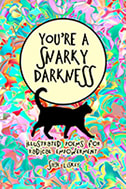
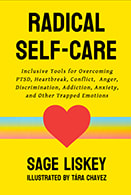
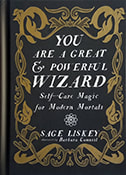
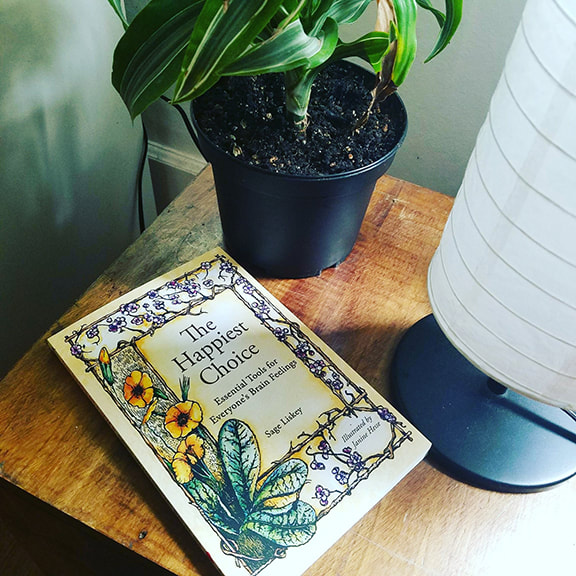

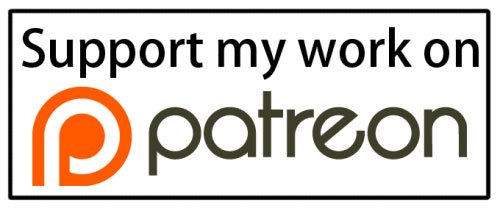

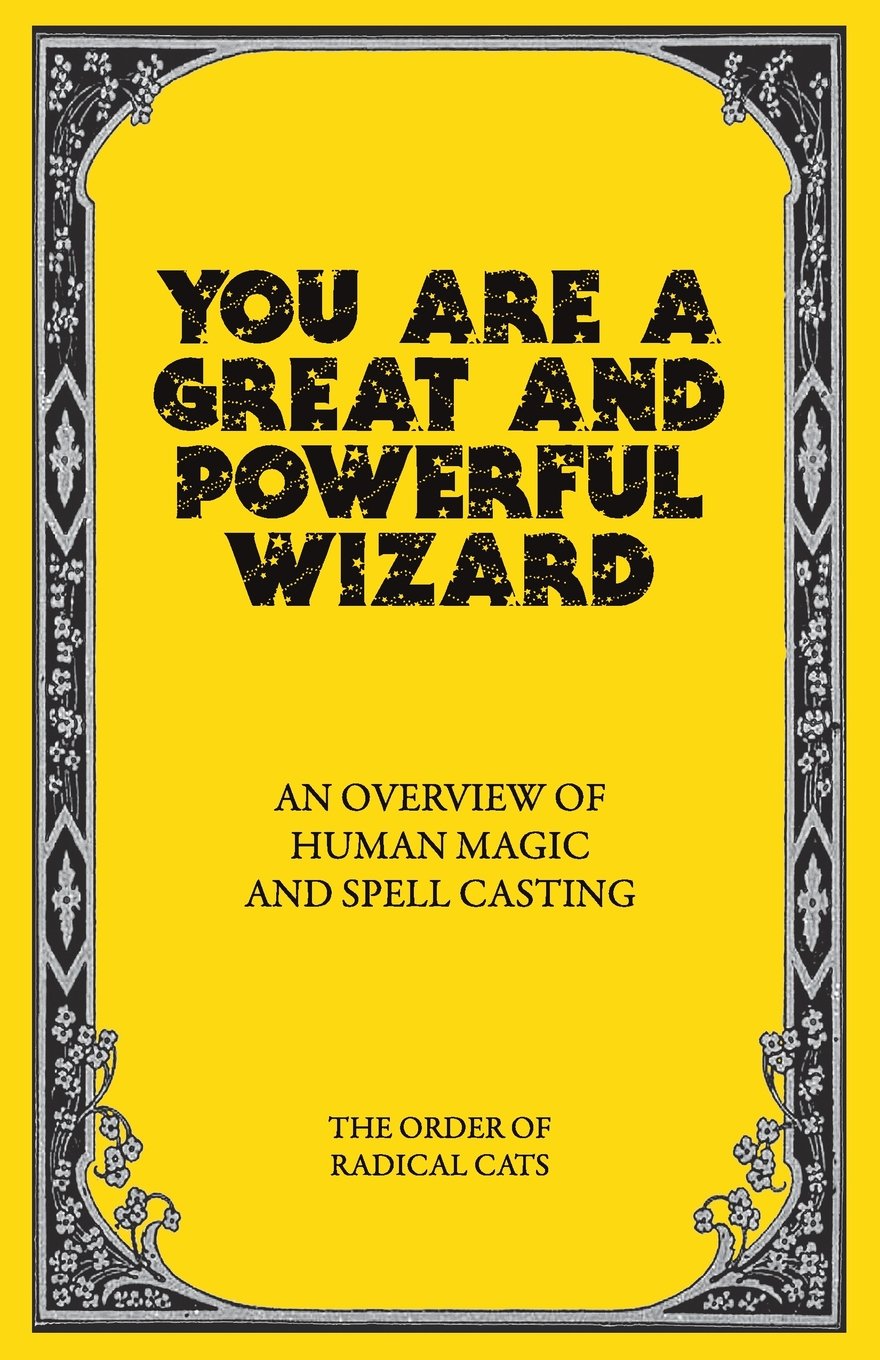
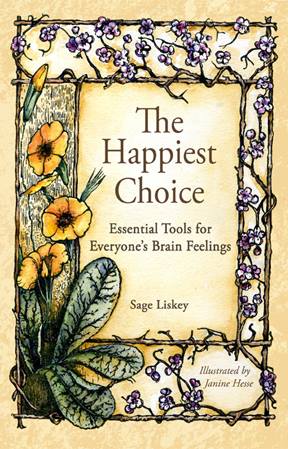

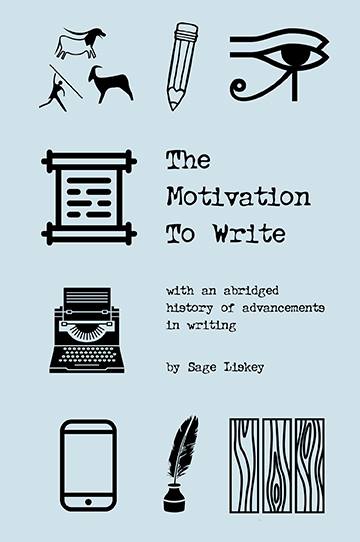
 RSS Feed
RSS Feed